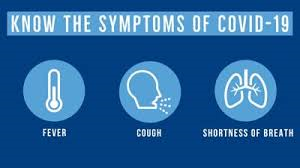By Gretta Becay
For every type of disaster planning, management personnel must answer the question, “In a worst-case scenario, how would a county or city or business keep running?”
In the case of the COVID 19 virus spreading through the U.S., government personnel are also asking, “How can we intervene to stop this from becoming a pandemic here?”
Amy Caron, Dodge County Public Health Director noted, “Dodge County Public Health has activated a partial Joint Emergency Operations Center (EOC) with Dodge County Emergency Management. We are working with our community partners, including EMS to assure they have the most current information on how to protect themselves. All county employees are receiving up-to-date information and are reviewing their Continuity of Operations Plans (COOP) to continue to provide services to the public in the event of staff being out ill. Dodge County is working together to protect our employees, partners and the public during the COVID-19 outbreak.”
At a webinar held March 12 sponsored by the League of Minnesota Cities, county officials talked about ways the county can help prevent a large outbreak of the COVID 19 virus locally and also ways the county would continue to provide services in that event.
No state declarations have been made as of today concerning events at, for example, local community centers. However, many events have been cancelled by the planners in the interest of public safety.
More and more people are practicing ‘social distancing’. That includes avoiding large public gatherings and maintaining distance between yourself and others to avoid breathing in droplets that could come from a nearby infected person. That works both ways. You could be a carrier and not show symptoms.
Providing Priority Services
Local officials discussed how to continue to provide priority services to citizens. What are those services? Who is essential to provide those services and who is their backup?
For example, if the county were to declare a state of emergency, the chair of the board of commissioners could have already been given the authority to do that without having to hold a meeting with a quorum of the commissioners.
Various questions were discussed including:
If employees are asked to work from home, is their web connection secure?
If employees run out of sick leave, can they have a negative balance in their sick leave account?
Would the county be repaid for expenses incurred as a result of the emergency?
For example, what if more laptops were needed to allow key employees to work from home?
Some of these answers could be tied to a declaration by the governor. For example, during the state of emergency, sick leave may be used that has not yet been earned.
But after the emergency, that would no longer apply.
What about the health of public safety employees; those who answer emergency calls to residents who are known or suspected carriers of the virus?
The CDC website has updated detailed information about how these personnel should care for patients and protect themselves.
During the webinar, it was also noted that patient information is still confidential and patient privacy should still be protected.
And remember, the Minnesota Department of Health reminds residents to continue to follow the most important guidelines of:
1. Stay home if you’re sick.
2. Wash your hands thoroughly with soap and water often. The Centers for Disease Control and Prevention suggests you wash for at least 20 seconds before eating, after blowing your nose, coughing, sneezing, or being out in public.
3. Cover your cough.
4. Avoid touching your eyes, nose, and mouth.
5. Disinfect frequently touched objects such as cell phones and remote controls with regular household cleaning spray or wipe.

